20th Century Geopolitical Network Analysis
Advanced Network Science & Graph Theory Analysis of International Relations
Phase 1
Data Collection
Phase 2
Text Mining & NLP
Phase 3
Network Analysis
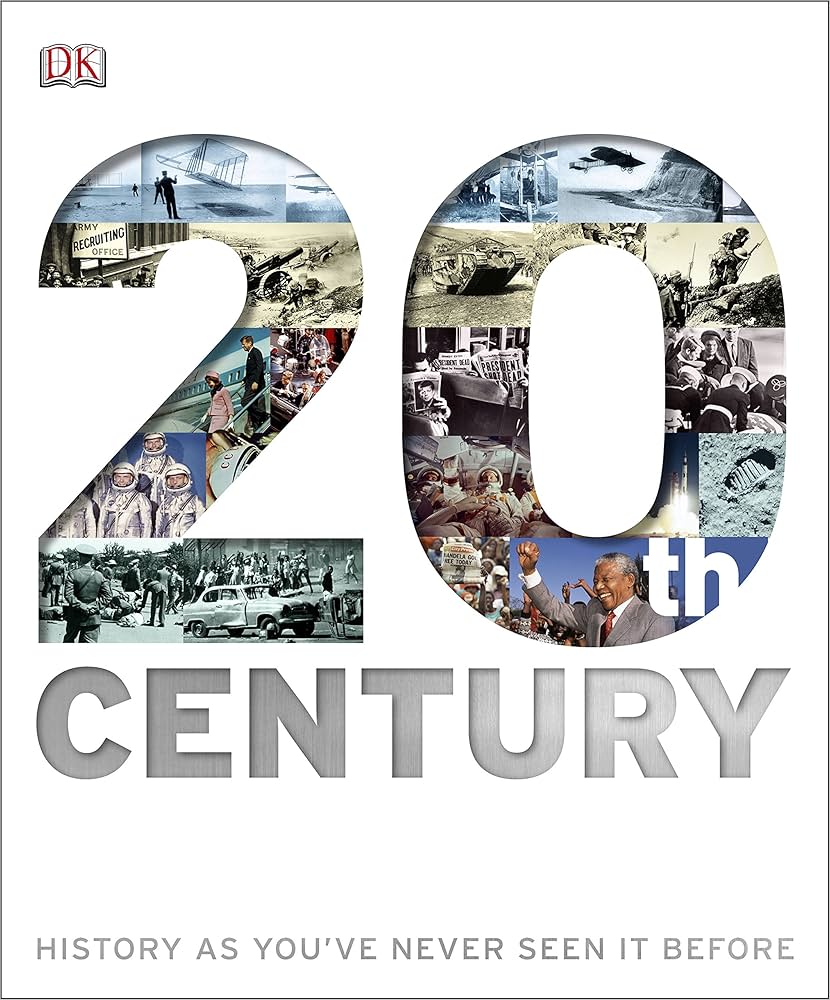
Project Overview
Goal:
Apply network science and graph theory to analyze 20th century international relationships, identifying geopolitical communities, central powers, and bridge nations using advanced centrality measures.
Business Problem:
Understand the complex web of international alliances and power dynamics that shaped 20th century geopolitics through quantitative network analysis and community detection algorithms.
20th Century Historical Context
The 20th century changed the world in unprecedented ways. The World Wars sparked tension between countries and led to the creation of atomic bombs, the Cold War led to the Space Race and the creation of space-based rockets, and the World Wide Web was created. These advancements have played a significant role in citizens' lives and shaped the 21st century into what it is today.
Global Conflicts & Wars
- World War I and II
- Cold War era
- Regional conflicts
- Decolonization movements
Technological Advancements
- Aviation and space exploration
- Digital revolution
- Medical breakthroughs
- Communication technologies
Political Transformations
- Rise and fall of empires
- Democratic expansions
- International organizations
- Geopolitical shifts
Social & Cultural Changes
- Civil rights movements
- Women's suffrage
- Educational expansion
- Cultural globalization
Data Characteristics
Period Coverage: 1900-1999
Content Type: Historical events and developments
Source: Wikipedia curated content
Format: Organized text with thematic headings
Phase 1: Data Collection
Project Status: COMPLETED
Phase 1 Deliverables:
- Web scraping implementation
- Wikipedia content extraction
- Data storage and verification
- Version control with GitHub
Technical Details:
Source: Wikipedia - Key Events of the 20th Century
Content: 66,144 characters, 108 sections
Method: Robust HTML parsing with fallback handling
Output: UTF-8 encoded text file
Phase 2: Text Mining & NLP Analysis
A comprehensive text mining and natural language processing project analyzing key events of the 20th century using Python's NLTK and TextBlob libraries.
Project Overview
This project performs sophisticated text analysis on historical data from the 20th century, including:
- Text Preprocessing & Tokenization
- Frequency Distribution Analysis
- Stop Word Removal
- Part-of-Speech Tagging
- Geopolitical Entity Recognition
- Data Visualization
Technologies Used
Phase 3: Network Analysis
Advanced network analysis of 20th century international relationships using graph theory and community detection algorithms.
Network Analysis Features:
- Country Relationship Networks: Constructed from historical text data
- Interactive Visualizations: Dynamic HTML graphs using Pyvis
- Community Detection: Leiden algorithm for geopolitical bloc identification
- Centrality Analysis:
- Degree Centrality: Most connected countries
- Closeness Centrality: Most centrally positioned nations
- Betweenness Centrality: Key bridge countries between blocs
- Enhanced Visualizations: Annotated plots with professional styling
Key Findings:
- Identified distinct geopolitical communities reflecting Cold War alliances
- Discovered key broker nations that mediated between power blocs
- Quantified the central role of superpowers in international relations
- Revealed network structures aligning with historical geopolitical realities
Technologies Used:
My Role & Process:
- Network Construction: Built country relationship networks from historical text data using NetworkX
- Community Detection: Applied Leiden algorithm to identify geopolitical blocs and alliances
- Centrality Analysis: Calculated degree, closeness, and betweenness centrality measures
- Interactive Visualization: Created dynamic network graphs using Pyvis for exploration
Network Analysis & Centrality Measures
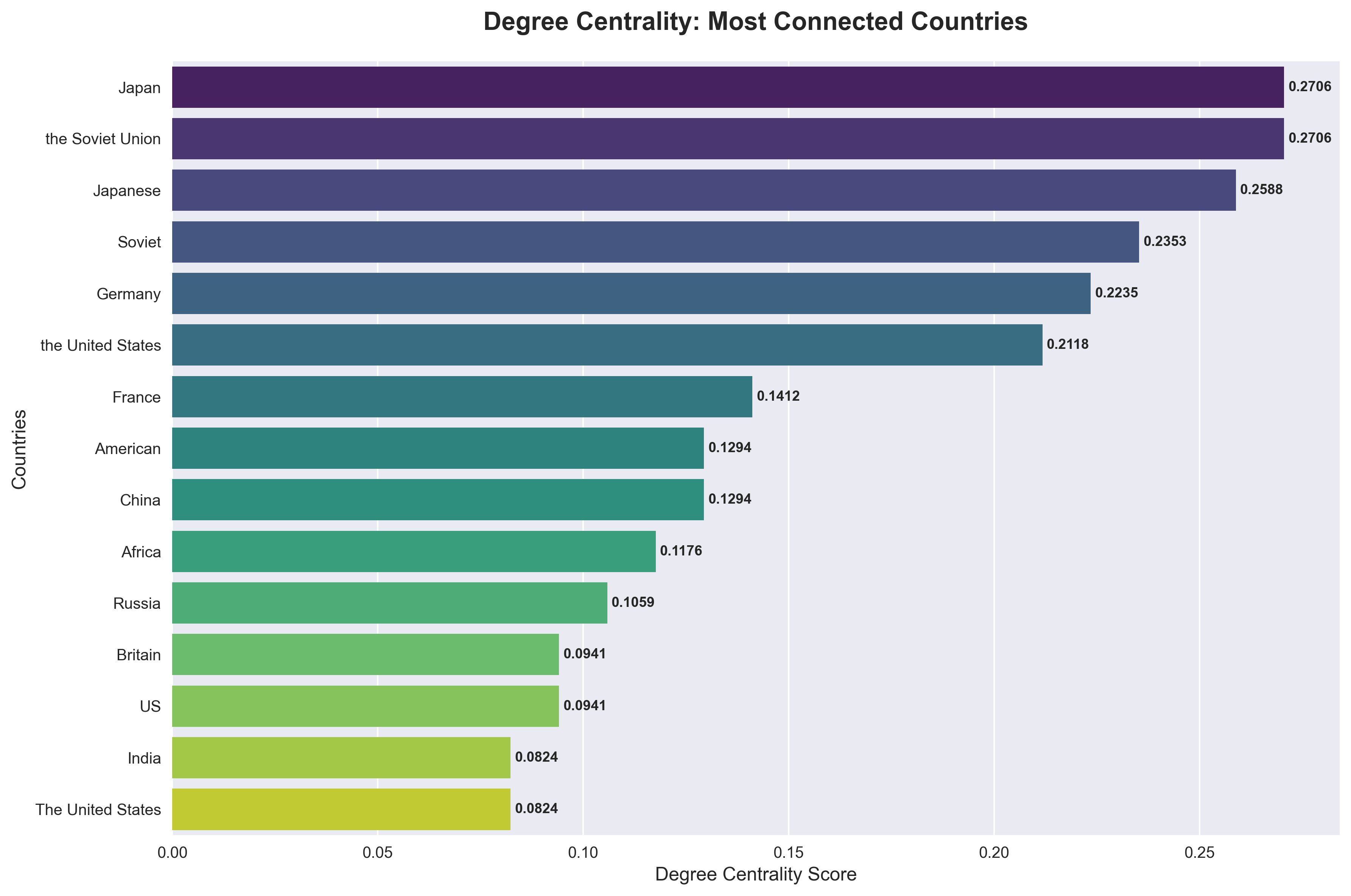
Degree Centrality
Measures direct connections - identifies the most connected countries in the network.
Key Finding: Japan and Soviet Union show highest degree centrality, indicating extensive diplomatic relationships.
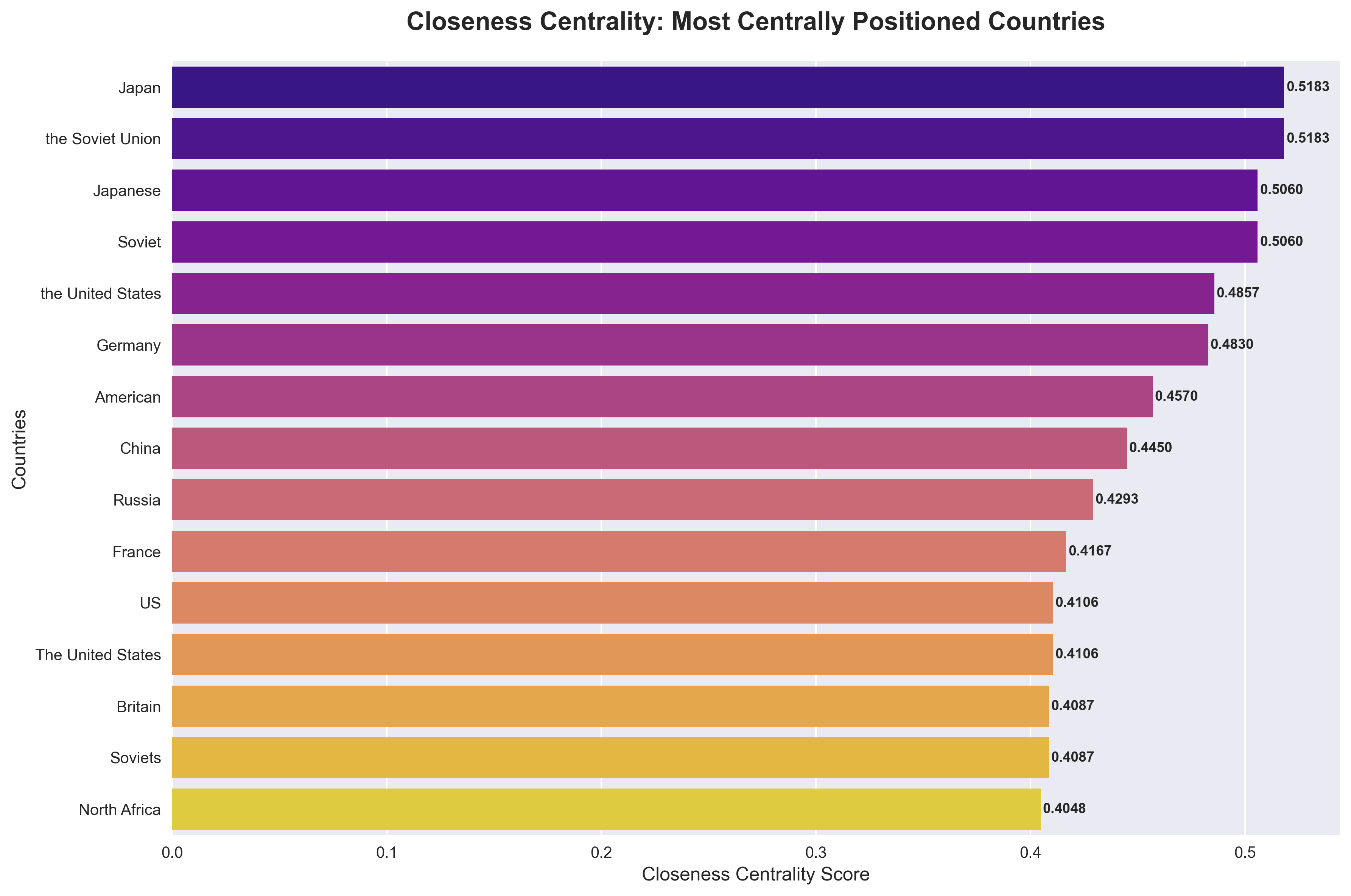
Closeness Centrality
Identifies countries that can quickly reach others - measures strategic positioning.
Key Finding: Japan and Soviet Union again lead, showing optimal network positioning for influence spread.
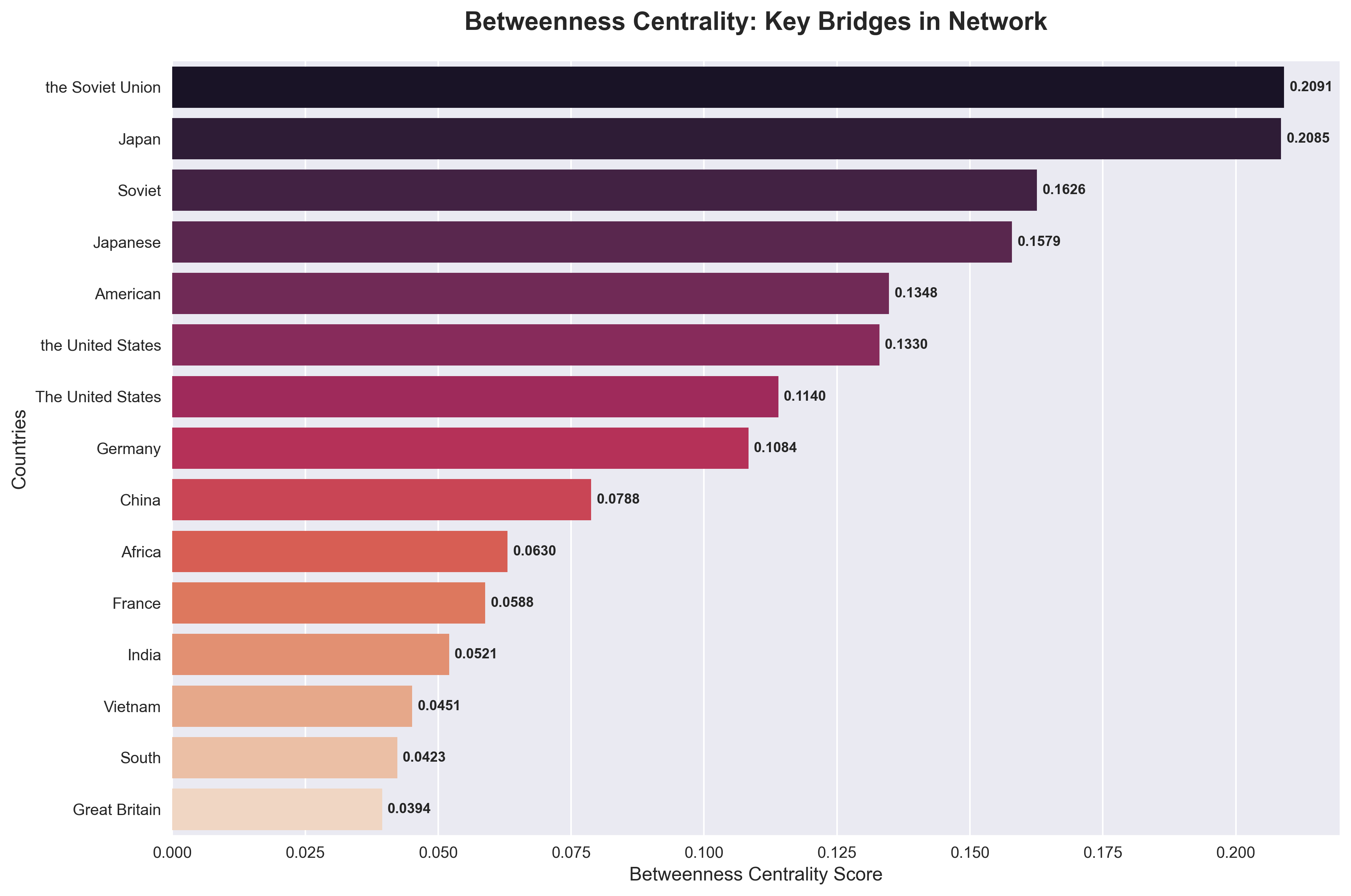
Betweenness Centrality
Reveals bridge countries that control flow between different network segments.
Key Finding: Soviet Union dominates as key broker, controlling information flow between geopolitical blocs.
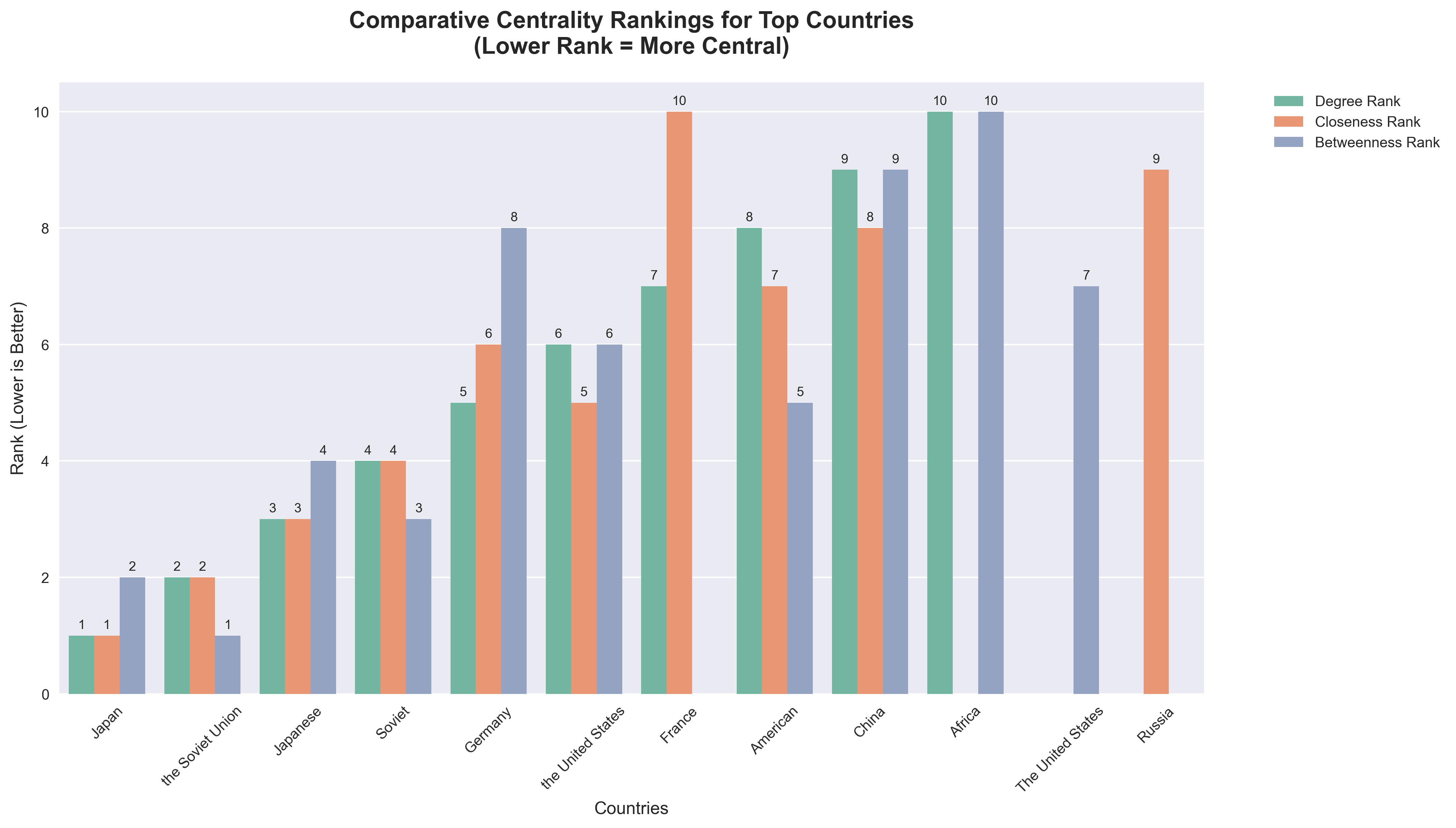
Comparative Analysis
Shows how countries rank across different centrality measures.
Key Finding: Superpowers maintain consistent high rankings across all centrality types, confirming their dominant network positions.
Strategic Network Insights
- Superpower Dominance: Soviet Union and Japan consistently rank highest across all centrality measures, confirming their pivotal roles in 20th century geopolitics.
- Bridge Nations: High betweenness scores reveal countries that served as crucial intermediaries between different geopolitical blocs during conflicts and negotiations.
- Community Structure: Network partitions align with historical alliances (Western Bloc, Eastern Bloc, Non-Aligned Movement), validating the quantitative approach.
- Influence Pathways: Closeness centrality identifies nations best positioned to rapidly spread influence or information through the international network.
Text Mining & Linguistic Analysis
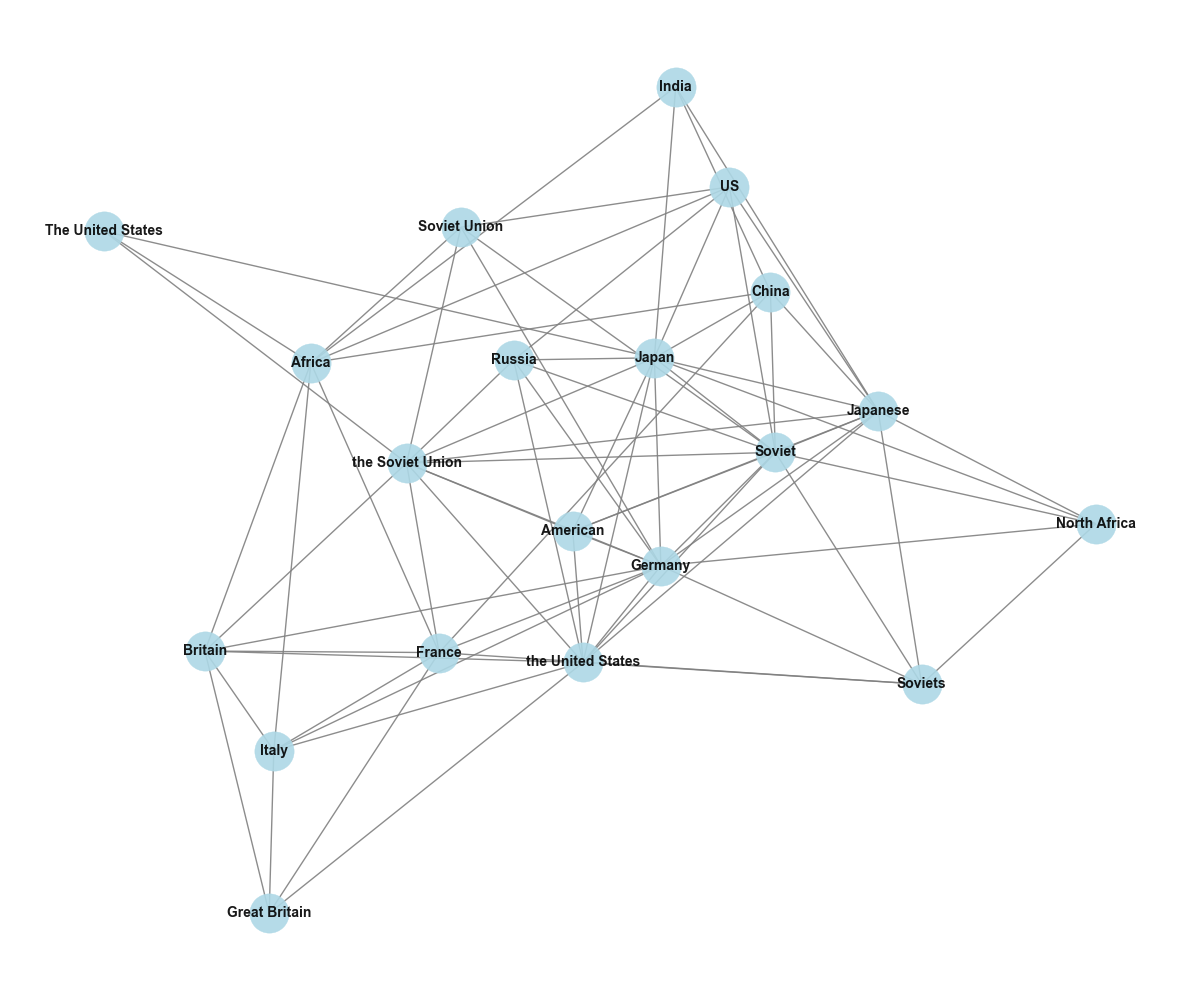
Country Mentions Analysis
Analysis of most frequently mentioned countries in 20th century historical text.
Key Finding: Germany and Japan lead with highest mentions, reflecting their central roles in major 20th century conflicts.
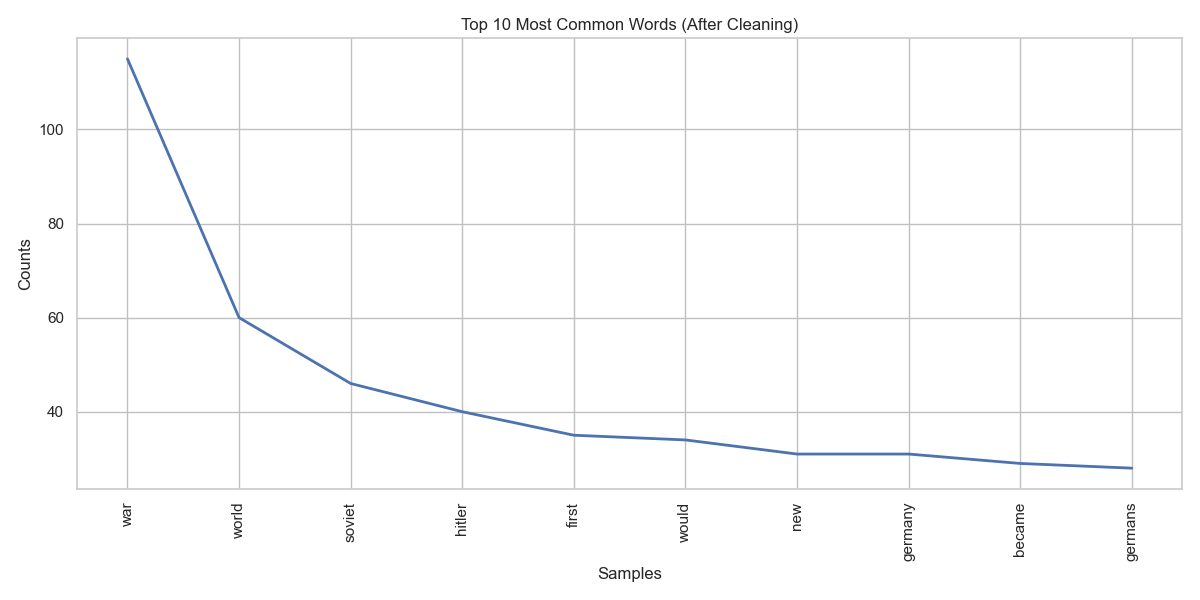
Linguistic Patterns
Frequency analysis of part-of-speech tags in historical text.
Key Finding: Nouns dominate historical discourse, with singular nouns (N) being most frequent, indicating focus on specific entities and concepts.

Word Category Analysis
Most frequent nouns, verbs, and adjectives in 20th century historical text.
Key Finding: Military and geopolitical terms dominate, with words like "war", "became", and "soviet" appearing most frequently.
Key Findings & Insights:
Strategic Impact:
- Quantified international power dynamics using network science methodologies
- Identified key broker nations that mediated between geopolitical blocs
- Revealed community structures matching historical alliance patterns
- Provided framework for predictive analysis of international relations
- Demonstrated application of graph theory to historical analysis